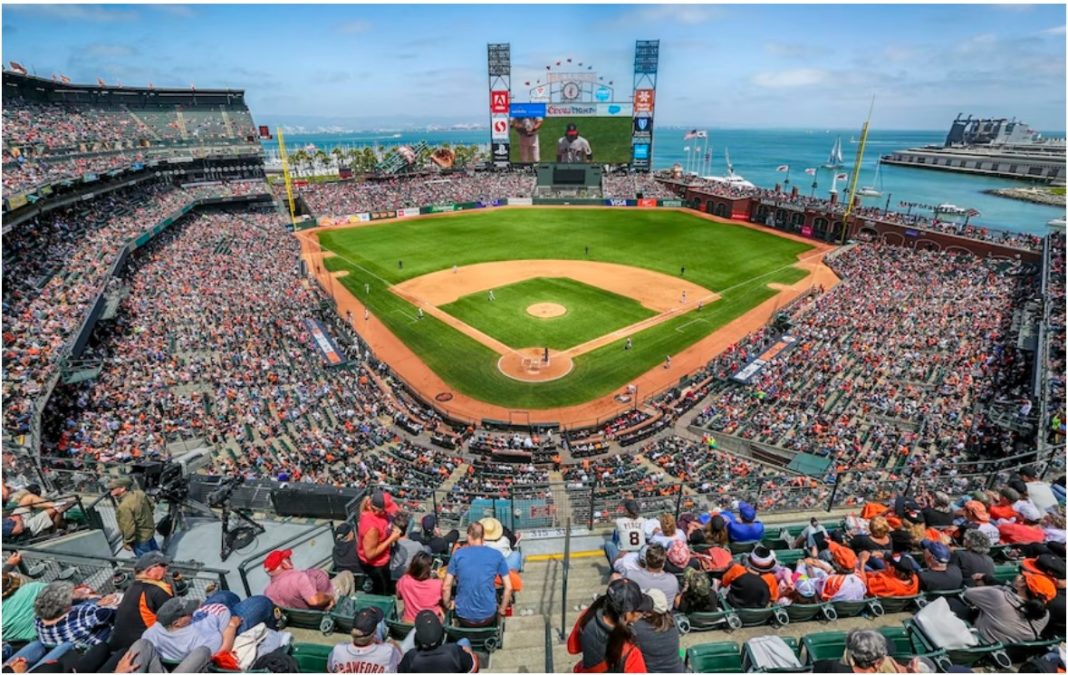The global economy has transformed over the last decade with tech playing a big role. Whether it’s influencing the technical aspect of an industry, such as sports, or indirectly boosting its sales, its impact can’t be understated.
The introduction of goal-line technology and VAR has scaled-down human error. Goal line technology is prominent in soccer and the National Hockey League (NHL), while playback video review is in major sports like tennis and the NFL (American Football).
However, our focus is on the direct impact of modern tech/trends in sports marketing, where brands have shifted from using mainstream media for advertising to relying more on public personalities on social media and other means.
Yes, social media has revolutionized how we consume data or information, and numerous organizations in the sports market are tapping its potential.
In fact, some of the top online bookmakers UK have social media accounts to engage their customers. Some even go the extra mile and engage public figures to push their brands.
Regarding bookmakers that engage public figures, they focus primarily on athletes, especially those with a dedicated following on Instagram, Twitter, TikTok, and Facebook. It makes more sense because an athlete connects with fans based on various aspects of their career. These may include their skill level (elite or amateur), public personality, or the popularity and accomplishments of the team they play for.

As fans admire the careers of their favorite sportsmen and women online, they see the athletes’ daily routines on diet, exercise, fashion sense, and even hobbies outside their profession. It is an insight into their day-to-day lives.
From a marketing perspective, it makes sense to use this engagement as a mutual benefit for all three parties, i.e., the athlete, the fan, and the brand. The athlete gets compensated financially, the fan consumes sports-related adverts that might be of interest, and the brand gets exposure to the specific target audience.
Most direct investment has gone to the professional sports teams that collectively receive the most significant amount from brand sponsorship or endorsement. Consumer data in media has indicated that there has been a saturation of online content because of the rampant expansion of social networks due to improved bandwidth internet bundles.
There are over half a billion posts a day on YouTube alone. Such media saturation has caused a conflict in consumption in a world where the population is experiencing a shrinking attention span. Most people can only concentrate on a media post that is less than a minute, but they can sit and watch a soccer or basketball game for over 80 minutes.
The athlete might endorse a brand on social media that sponsors the team they play for via a sponsorship agreement. The sponsorship is usually the team plastering the brand name on the official team kit, uniform, or even stadium, thus creating an excellent marketing synergy between the athletes, team, and brand.
On the one hand, the athlete posts short videos and pictures on their social media accounts detailing their routine and progress. When they wear the team kit and social media managers post on their accounts, it generates engagement via likes, comments, or sharing. Pictures and videos taken by the team are shared with the sponsor and all three parties post on their social media accounts.
Impact on the Economy
So, how impactful has this been on the economy? The biggest benefactor is the brand. Take the NFL’s exposure during the 2022 SuperBowl finals, which recorded 115 million viewers, while the UEFA champions league finals had 400 million viewers. These annual events had global fans streaming to watch them.
Those who couldn’t watch the live stream or afford tickets rewatched the games on scheduled repeat broadcasts, bringing the total viewership close to a billion viewers within a month. At least a billion viewers watched four teams play for 150 minutes. A soccer game lasts 90 minutes, and an NFL game lasts 60 minutes.
The total ad revenue generated by the SuperBowl XLVII 2023 between the Philadelphia Eagles and Kansas City Chiefs was $500 million in under 4 hours. The nationwide SuperBowl-related revenue across America was $16.5 billion, where fans spent money on items or services after direct influence by the running adverts.
The official released audited data for the UEFA Champions League final in 2022 between Real Madrid and Liverpool stands at a total income of $4.29 billion. It decreased from $6.06 billion in 2021 because of COVID-related global financial setbacks and constraints.
Real Madrid has the second most expensive sponsorship contract in European football with Emirates Airline for $75 million annually. Emirates had a brand exposure of approximately 400 million live viewers in less than 5 hours. Consequently, there was an average of 300,000 viewers per game from Spain alone in the Spanish League, yet Real Madrid played 37 games.
As for brand influencer engagement, Karim Benzema, their star striker, has an average of 20 million followers on Twitter and 72 million on Instagram. A single picture or video on his social media with a Real Madrid kit or uniform had an expected engagement of 250 million viewers, even if he posted once weekly.
So the financial impact of sponsorship is that athletes make extra income, and the teams receive lucrative sponsorship contracts to invest in expanding their facilities or buying better players. It’s led to more lucrative contracts for players because of their advertising influence. In general, teams, athletes, and brands are paying more taxes on more income.





